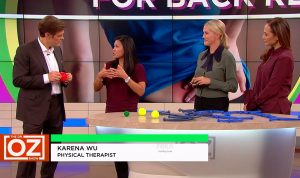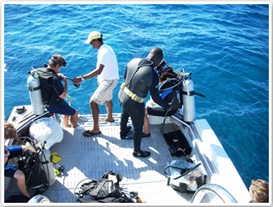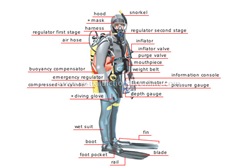 ActiveCare Physical Therapy, PC
ActiveCare Physical Therapy, PC
29 West 38th Street
Suite 601
New York, NY 10018

* We Accept Medicare | No Fault | Workers Comp *
A PT’s Perspective on Dive Boats and the Need for Leg Strength
This past Thanksgiving, I went diving in the Turks and Caicos . As a Physical Therapist who does a lot of manual therapies, I need my time to unwind and I adore scuba diving and go whenever I get a chance. But it’s basically winter in the Caribbean and while temperatures are balmy, the winds are strong and that meant some serious 3-4 foot swells when taking the boat to my dive destination.
 I discovered that I need a lot of leg strength on the boat to be able to do the tasks that are part of the sport of diving. Core strength is important, but it’s the leg strength that really pays off when are you on a boat in choppy seas.
I discovered that I need a lot of leg strength on the boat to be able to do the tasks that are part of the sport of diving. Core strength is important, but it’s the leg strength that really pays off when are you on a boat in choppy seas.
There are many situations on a boat where you require leg strength and the balance of systems of the muscles, joints and joint receptors:
–Balancing as you walk from bow to stern
–Bracing your body, both sitting and standing, as the boat moves through the water and meets swells
 –Coming from a sit to a stand after you strap on your dive gear
–Coming from a sit to a stand after you strap on your dive gear
–Moving with the equipment strapped to you as you move to the back of the boat to jump in the water
–Getting back on the boat after your dive and balancing on the ladder up to the outboard
To do strenuous watersports hobbies like scuba diving (and surfing, windsurfing and kitesurfing), you need to be strong. A big component of diving is being able to handle the boat ride. All of these tasks are some variation of a squat and here are three variations that well get your legs nice and strong so that you can enjoy scuba diving to the fullest without tiring yourself or risking injury:
Freestanding squat: A squat where you aren’t holding on to anything.
Back squats: A squat where you are holding on to a chair or table and your hips and knees are at a 90-degree angle. (Weightlifters do this squat with barbell, instead of holding onto an object.)
Side lunges: A move from side to side in a squat.
Do 3 sets building up to 20 squats per set, and you’ll get your legs in great shape for diving and other watersports.
 If you get knocked around on the boat or don’t feel as strong as you could be, a visit to your local Physical Therapist will help with instruction on proper exercises and exercise technique. Remember, the best Physical Therapist will emphasize form and function and sport-specific requirement so you’ll enjoy the ride on the boat without worrying about injury and have a great time swimming with all the great underwater animals!
If you get knocked around on the boat or don’t feel as strong as you could be, a visit to your local Physical Therapist will help with instruction on proper exercises and exercise technique. Remember, the best Physical Therapist will emphasize form and function and sport-specific requirement so you’ll enjoy the ride on the boat without worrying about injury and have a great time swimming with all the great underwater animals!
